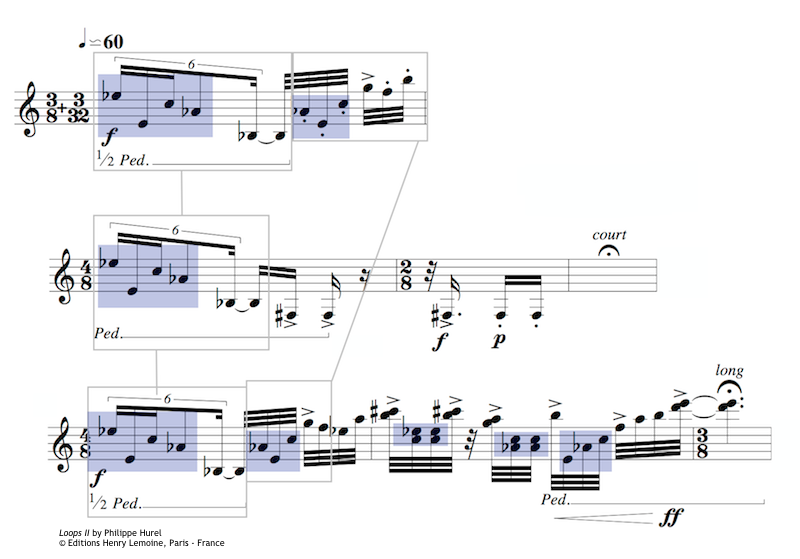Improving the practice and performance of contemporary music

Main motif
- The head of the main motive: a five-note descending pattern in a sextuplet rhythm.
- The tail of the main motive: a six-note ascending pattern in a 32nd rhythm, divided by the accentuated G5.
- Using only the head of the main motive and extending it with the rhythmical use of F#3
- Extending the tail of the main motive, using material from the main motive itself as displayed by the purple colour in the example. This results in an extended main motive that can also function as the main motive itself.
Loop A starts with the original head and tail of the main motif and ends with the motif with the extended tail. The last four 32nd notes of this tail are starting point for Loop B. A first ending of loop B is the main motif ending with the repeated F#3. After a short pause the main motif with the extended tail is played. Loop C starts with the head of the motif at the beginning of loop 5. It ends loop 5 with a short reprise of the entire motif as shown in the first line. Loop 6 continues with the tail of this motif.
The main motive appears with two different pedallings: 1/2 pedal and full pedal. This means the difference between the two techniques should be very distinct to obtain as much difference as possible.The pedalling that could be suggested for the first measure:
- Full pedal on the first three notes, making sure the last of the three won’t ring through the fourth.
- Full pedal on the fourth and the fifth note
- Non-pedal on the staccato notes, this can be enhanced by raising the finger-pressure on the mallets, so the sound closes up a bit.
The accent in the staccato note sequence can optionally have a bit of pedal to bring it out more. The second measure of course is played with a full open pedal. Finger dampening or playing the bar closer to the node can be used to achieve the staccato piano-marked notes in the third bar. The use of the 1/2 pedal through the piece should always contribute to clarity of the text and to the groove of the rhythm. Also when no pedal is marked, this 1/2 pedal can be applied, for example in measure 6.